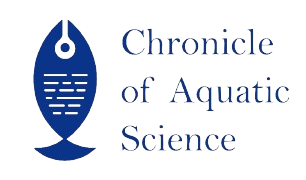| File | Action |
|---|---|
| CoAS_V1IS5_04 | Download |
- 919088951040 call us
- chronicleofaquaticscience@gmail.com Mail us
CoAS_V1IS5_04
Popular Article
Specific Pathogen-Free (SPF) Fish/Shellfish Stocks: Reducing Disease Risk in Aquaculture
Nidhi Pandit, R. K. Brahmchari*, S. K. Nayak, H. S. Mogalekar, M. K. Singh
Abstract
Aquaculture has expanded significantly during the past few decades. As the demand for seafood rise continuously, aquaculture has become a realistic option to supplement wild-caught fish and meet world protein needs. However, the aquaculture sector too faces a number of challenges, including environmental issues and disease outbreaks that may result in huge financial losses. To overcome these problems, in recent years, specific pathogen-free (SPF) seeds have been developed and the success story of Litopenaeus vannamei is well known. Specific pathogen-free (SPF) fish and shellfish stocks are intentionally raised and bred to eliminate the detrimental pathogens responsible for causing significant morbidity or mortality. SPF is a promising solution to ensure the sustainability and productivity of aquaculture operations. This article explores the significance of SPF seeds and their potential to create a sustainable future for the aquaculture industry by reducing disease outbreak.
Keywords
Fish/ Shellfish, Specific pathogen-free (SPF), Disease, Aquafarming, Biosecurity
References
Barman, D., Kumar, V., Roy, S. and Mandal, S.C., 2012. Specific pathogen free shrimps: Their scope in aquaculture. World Aquaculture, 43(1), p.67
Delisle, L., Petton, B., Burguin, J.F., Morga, B., Corporeau, C. and Pernet, F., 2018. Temperature modulate disease susceptibility of the Pacific oyster Crassostrea gigas and virulence of the Ostreid herpesvirus type 1. Fish & shellfish immunology, 80, pp.71- 79.
Diringer, B., Moreno, V., Pretell, K., Avellan, R., Sahuquet, M., Vasquez, R., Gentile, G. and Mialhe, E., 2019. Production of specific pathogen-free larvae from genetically characterized populations of Anadara tuberculosa (Bivalvia), for stock enhancement and aquaculture in the Peru Northeast Biosphere Reserve. Latin American Journal of Aquatic Research, 47(3), pp.547 https://thefishsite.com/articles/genomarsecures-spf-status-for-tilapia-facility
Kent, M.L., Buchner, C., Watral, V.G., Sanders, J.L., LaDu, J., Peterson, T.S. and Tanguay, R.L., 2011. Development and maintenance of a specific pathogen-free (SPF) zebra fish research facility for Pseudoloma neurophilia. Diseases of aquatic organisms, 95(1), pp.73-79.
Lightner, D. V. (2011). Status of shrimp diseases and advances in shrimp health management. Diseases in Asian Aquaculture VII. Fish Health Section, Asian Fisheries Society, Selangor, Malaysia, 121-134.
Machimbirike, V.I., Jansen, M.D., Senapin, S., Khunrae, P., Rattanarojpong, T. and Dong, H.T., 2019. Viral infections in tilapines: More than just tilapia lake virus. Aquaculture, 503, pp.508-518.
Murray, K. N., Clark, T. S., Kebus, M. J., & Kent, M. L. (2022). Specific Pathogen Free–A review of strategies in agriculture, aquaculture, and laboratory mammals and how they inform new recommendations for laboratory zebrafish. Research in veterinary science, 142, 78-93.
Sanz, V. A. (2018). Specific pathogen free (SPF), specific pathogen resistant (SPR) and specific pathogen tolerant (SPT) as part of the biosecurity strategy for whiteleg shrimp (Penaeus vannamei Boone 1931). Asian Fish Soc, 31, 112-120.
Shinn A., Pratoomyot J., Bron J., Paladini G., Brooker E., Brooker A. (2015). Economic impacts of aquatic parasites on global finfish production. Global Aquaculture Advocate 2015, 58–61.
Shinn, A. P., Pratoomyot, J., Griffiths, D., Trong, T. Q., Vu, N. T., Jiravanichpaisal, P., Briggs, M. (2018). Asian shrimp production and the economic costs of disease. Asian Fisheries Science. 31, 29-58. Vijayan, K. K., Praveena, P. E., Alavandi, S. V. (2015). Disease surveillance in brackishwater aquaculture: recent developments. MPEDA Newsletter, February, p.37-45
Washim, M.R., Rahman, S.L. and Nahar, S., 2016. Culture potential of SPF (specific pathogen-free) shrimp (Penaeus monodon) with special context of its growth and production performance in South-west coastal region of Bangladesh. International Journal of Fisheries and Aquatic Studies, 4(6), pp.339-344.
World Bank. (2014). Reducing disease risks in aquaculture. World Bank Report #88257-GLB
- Published online
- 30th October, 2023
How to Cite the Article
Pandit, N., Brahmchari, R. K., Nayak, S. K., Mogalekar, H. S. and Singh, M. K. 2023. Specific Pathogen-Free (SPF) Fish/Shellfish Stocks: Reducing Disease Risk in Aquaculture. Chronicle of Aquatic Science 1(5): 49-57.
Copyright
This is an open-access article distributed under the terms of the Creative Commons Attribution License (CC BY). The use, distribution or reproduction in other forums is permitted, provided the original author(s) and the copyright owner(s) are credited and that the original publication in this journal is cited, in accordance with accepted academic practice. No use, distribution or reproduction is permitted which does not comply with these terms.

CoAS_V1IS5_04


